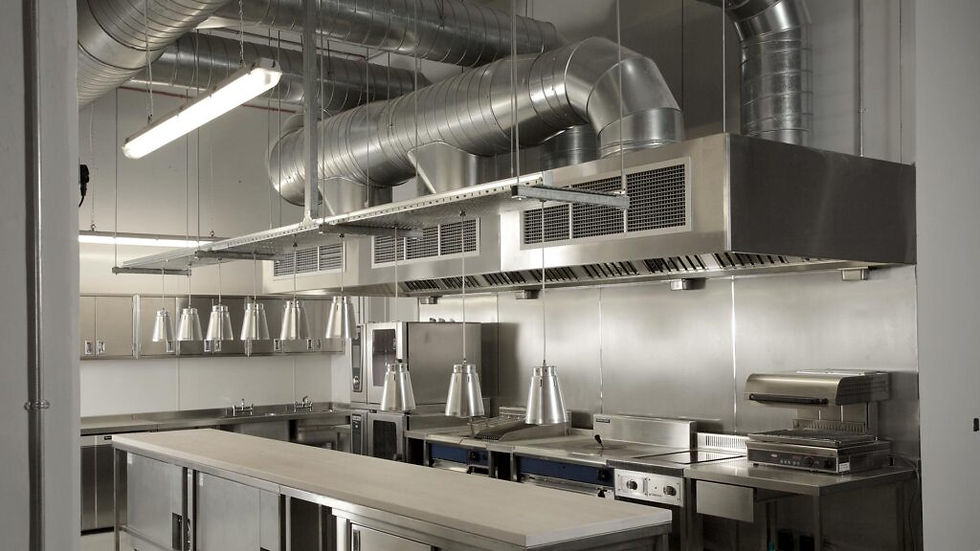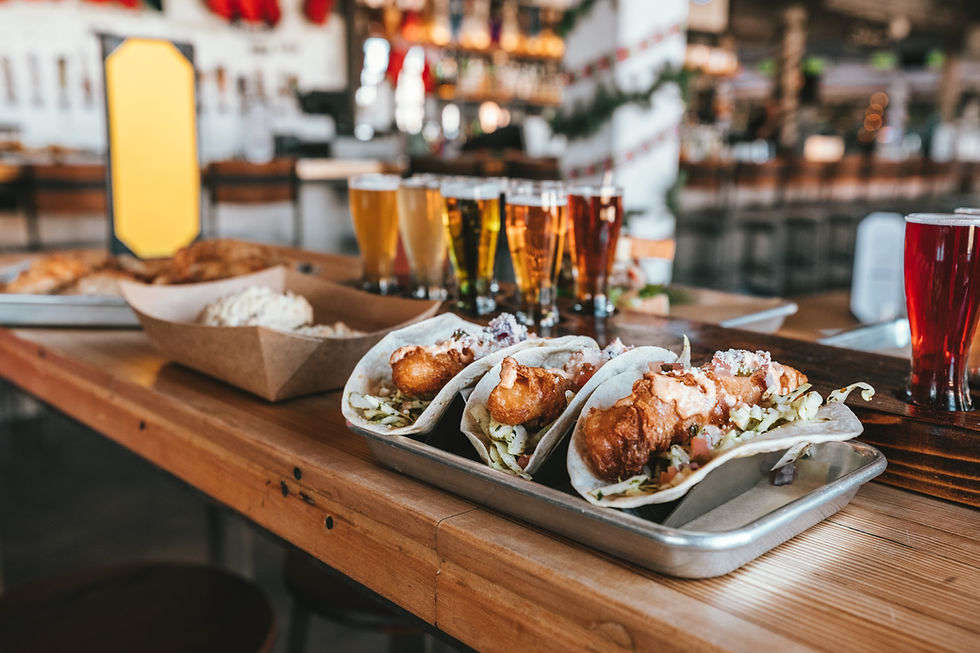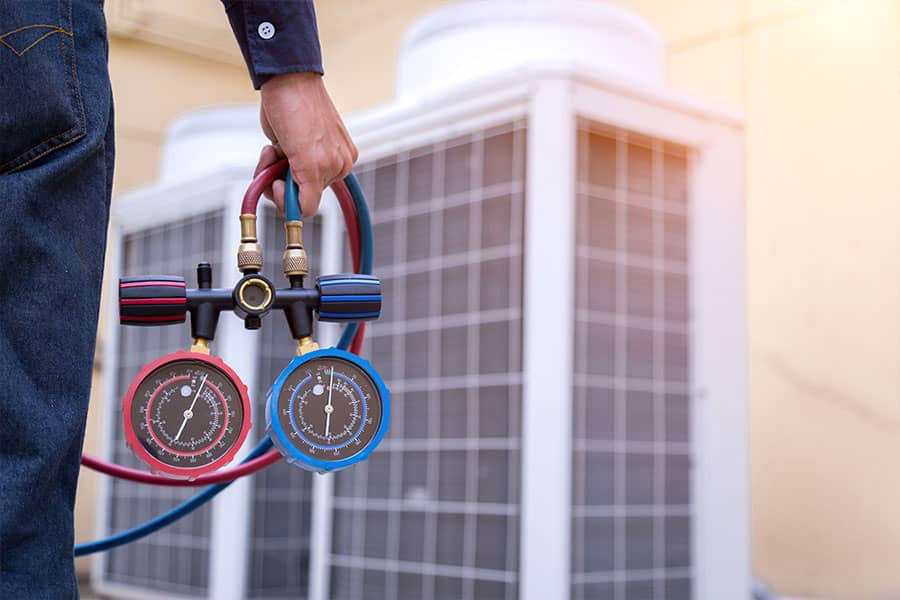
The food and beverage industry, encompassing restaurants, cafes, specialty food businesses, bars, and pubs, faces unique challenges in maintaining efficient and compliant HVAC and refrigeration systems. These systems are critical for ensuring food safety, staff comfort, and customer satisfaction while navigating stringent regulations and high energy demands. Aging HVAC systems and the invisible costs associated with inefficiencies, such as increased utility bills and downtime, pose significant risks.
The Hidden Cost in Commercial Kitchens

Unique HVAC and Refrigeration Needs in the Food and Beverage Industry
The food and beverage sector operates in high-pressure environments where HVAC and refrigeration systems must balance temperature control, air quality, and energy efficiency. Unlike standard commercial buildings, these establishments deal with intense heat from cooking equipment, grease-laden vapors, and fluctuating occupancy levels. Compliance with health, safety, and fire codes, such as NFPA 96 and ASHRAE Standard 154, adds complexity. Aging HVAC systems exacerbate these challenges, leading to higher maintenance costs and energy consumption, often unnoticed until failures occur. The invisible cost—rising utility bills, reduced equipment lifespan, and lost productivity—can silently erode profits.

Restaurants and Commercial Kitchens
Restaurants with commercial kitchens require robust HVAC and refrigeration systems to manage heat, smoke, and odors generated by grills, fryers, and ovens. Commercial kitchen exhaust hoods and ventilation hoods for commercial kitchens are foundational, capturing grease-laden vapors and maintaining air quality. Type I hoods, designed for grease-producing equipment, integrate grease filters and fire suppression systems, adhering to International Mechanical Code (IMC) standards. Commercial kitchen exhaust fans ensure proper airflow, typically measured in cubic feet per minute (CFM), to prevent heat buildup. Makeup air units replace exhausted air, maintaining slight negative pressure to contain odors within the kitchen.
Refrigeration is equally critical, with walk-in coolers and freezers preserving perishable ingredients. Variable refrigerant flow (VRF) systems offer precise temperature control, while smart sensors monitor storage conditions to prevent spoilage. Aging systems, however, struggle with inefficiencies, increasing energy costs by up to 30% of a restaurant’s HVAC load. Regular maintenance, including cleaning grease buildup in kitchen exhaust systems, mitigates risks like fire hazards and system failures. Upgrading to energy-efficient kitchen ventilation fans and hoods reduces the invisible cost of excessive energy use and downtime.

Coffee Shops Without a Kitchen
Coffee shops without kitchens have simpler HVAC needs but still face unique challenges. These spaces prioritize customer comfort in high-traffic areas with fluctuating occupancy. Commercial ventilation systems maintain indoor air quality, removing coffee aromas and humidity from espresso machines. Small-scale refrigeration units, such as under-counter coolers, store milk and perishables, requiring reliable temperature control to meet health codes.
Energy-efficient split-system air conditioners or ductless mini-splits provide zoned cooling, ideal for compact spaces. Smart thermostats optimize energy use by adjusting temperatures during off-peak hours. Aging HVAC systems in coffee shops often go unnoticed, leading to invisible costs like higher utility bills and customer discomfort from inconsistent temperatures. Upgrading to modern, energy-efficient systems and integrating air purifiers enhances air quality, aligning with customer expectations for a clean, comfortable environment.

Restaurants Inside Hotels
Restaurants within hotels face dual demands: integrating with the hotel’s central HVAC system while addressing kitchen-specific needs. Commercial kitchen vent hoods and kitchen exhaust systems manage cooking effluents, but ductwork must avoid cross-contamination with hotel guest areas. Makeup air units are critical to prevent negative pressure from pulling odors into dining or lobby spaces. VRF systems allow independent temperature control for the restaurant, ensuring guest comfort without overloading the hotel’s HVAC infrastructure.
Refrigeration demands are high, with walk-in units and display cases storing diverse ingredients. Aging HVAC systems in hotel restaurants contribute to invisible costs through energy inefficiencies and maintenance delays, which can disrupt hotel operations. For example, a failing commercial kitchen exhaust fan may cause heat buildup, affecting staff productivity and guest satisfaction. Integrated building management systems (BMS) monitor HVAC and refrigeration performance, enabling predictive maintenance to reduce downtime and comply with sustainability regulations.

Bars with a Kitchen
Bars with kitchens combine the challenges of commercial kitchens and high-occupancy public spaces. Ventilation hoods for commercial kitchens and commercial kitchen exhaust hoods handle grease and heat from cooking, while commercial ventilation systems ensure fresh air in bar areas crowded with patrons. Type I hoods with fire suppression systems are essential for safety, and kitchen ventilation fans maintain airflow to prevent smoke migration. Makeup air units balance pressure, avoiding drafts that could discomfort customers.
Refrigeration needs include walk-in coolers for food storage and specialized units for kegs and bottled beverages. Aging HVAC systems increase energy costs and risk failures, such as a malfunctioning exhaust fan causing grease buildup, a fire hazard. The invisible cost manifests in higher utility bills and potential health code violations. Energy-efficient hoods with variable-speed fans and smart refrigeration controls reduce energy consumption, while regular maintenance of kitchen exhaust systems minimizes risks.

Bars Without a Kitchen
Bars without kitchens focus on customer comfort and beverage storage, with minimal heat or grease production. Commercial ventilation systems maintain air quality, removing cigarette smoke (where permitted) or stale air from crowded spaces. Ductless mini-split systems provide efficient cooling, while air purifiers address odors and allergens. Refrigeration is critical for kegs, bottles, and garnishes, with under-counter coolers and ice machines requiring consistent performance to meet demand.
Aging HVAC systems in these bars lead to invisible costs through inefficient cooling and refrigeration, increasing energy bills and risking beverage spoilage. For example, a failing compressor in a cooler can disrupt service, affecting revenue. Upgrading to energy-efficient systems with smart controls and regular maintenance ensures reliability and compliance with health codes, enhancing customer experience without significant capital outlay.
Addressing Aging HVAC Systems and Invisible Costs
Aging HVAC systems are a pervasive issue in the food and beverage industry, contributing to invisible costs that undermine profitability. These systems, often installed years ago, struggle to meet modern energy efficiency standards and regulatory requirements. For instance, older commercial kitchen exhaust fans and hoods may lack variable-speed controls, leading to excessive energy use. In restaurants, HVAC accounts for approximately 30% of energy consumption, with kitchen ventilation systems comprising up to 50% of that load.
The invisible costs include:
Increased Energy Bills: Inefficient systems consume more power, inflating utility costs unnoticed until budgets are strained.
Maintenance Expenses: Aging equipment requires frequent repairs, diverting resources from growth initiatives.
Downtime: System failures disrupt operations, leading to lost revenue and customer dissatisfaction.
Health and Safety Risks: Grease buildup in kitchen exhaust systems or poor ventilation can violate codes, risking fines or closures.
Reduced Equipment Lifespan: Overworked systems fail sooner, necessitating costly replacements.
To combat these issues, businesses can adopt proactive strategies:
Regular Maintenance: Cleaning commercial kitchen vent hoods and ducts prevents grease buildup, reducing fire risks and improving efficiency.
Energy Audits: Identifying inefficiencies in kitchen ventilation fans and refrigeration units guides targeted upgrades.
Smart Technology: BMS and IoT sensors monitor performance, enabling predictive maintenance to prevent failures.
Upgrades: Replacing aging systems with energy-efficient commercial ventilation systems and hoods lowers energy costs and ensures compliance.
Financial Planning: Leasing or financing new equipment spreads costs, preserving cash flow while addressing inefficiencies.

Technology and Solutions for Optimal Performance
Tailored technologies address the unique needs of each food and beverage setting:
Increased Energy Bills: Inefficient systems consume more power, inflating utility costs unnoticed until budgets are strained.
Maintenance Expenses: Aging equipment requires frequent repairs, diverting resources from growth initiatives.
Downtime: System failures disrupt operations, leading to lost revenue and customer dissatisfaction.
Health and Safety Risks: Grease buildup in kitchen exhaust systems or poor ventilation can violate codes, risking fines or closures.
Reduced Equipment Lifespan: Overworked systems fail sooner, necessitating costly replacements.

Navigating Regulations and Sustainability
The food and beverage industry faces stringent regulations, including IMC, NFPA 96, and ASHRAE standards, governing ventilation hoods for commercial kitchens and exhaust systems. Compliance ensures safety and avoids penalties but can strain aging systems. Sustainability regulations, such as energy efficiency mandates, further complicate operations. For example, the Energy Standards limit short-circuit hoods to 10% replacement air to reduce energy waste.
Upgrading to energy-efficient commercial ventilation systems and kitchen exhaust systems aligns with these regulations while reducing invisible costs. Financial incentives, like tax credits for energy-efficient equipment, offset upgrade expenses. Businesses can also explore leasing options to manage capital expenditures, ensuring compliance without financial strain.



.png)